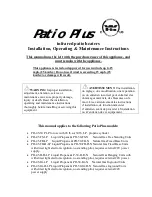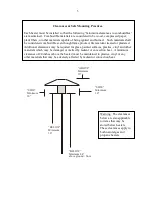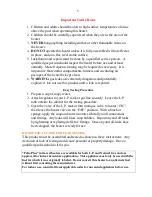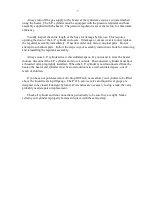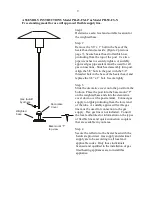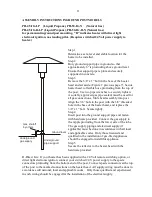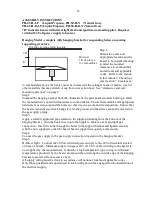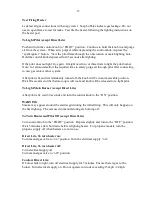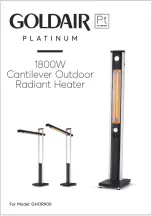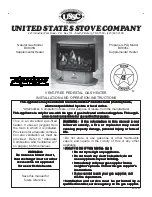
4
Infrared Heat
Patio Plus heaters are effective in heating outdoor spaces because they utilize infrared or
radiant heat. Infrared energy is the same type of warmth we get from the sun. Infrared
energy warms people and objects without heating the intervening air. Unlike the sun, Patio
Plus heaters do not produce Ultraviolet (UV) rays that can be harmful. Infrared energy
travels by line-of-sight so the designer must be aware that doors, panels or windows may
obstruct the infrared energy from reaching the desired location. Overlapping infrared
patterns from numerous heaters may be used effectively to provide even heat distribution.
Where multiple heaters are used with the remote switching option it is suggested that they be
switched independently, so as to allow for flexibility in heating larger areas as the space
becomes occupied by more people. A timer is a good method to ensure that all heaters are
turned off when the patio is not being used. Because infrared heaters heat people and
objects, and thermostats measure air temperature, a thermostat may not be the best method
for controlling outdoor heaters.
Enclosed Patios
Enclosed patios must be large enough to meet the clearance to combustibles, and ventilation
requirements as provided for in all applicable codes. For very small enclosed patios, Patio
Plus heaters may not be suitable. DANGER: Patio Plus heaters are not vented to the
outdoors and therefore are subject to all local and applicable codes for unvented appliances.
This heater could make Carbon Monoxide (CO). Exposure to CO can cause serious injury,
brain damage or death. Failure to comply with applicable ventilation requirements could
cause serious injury or death.
Patio Design Considerations
Heater placement is critical for effective and efficient patio heating. If heaters are placed too
close together, or mounted too low, patrons of the patio may become uncomfortable. If
heaters are placed too far apart, or too high, on a breezy or wind-swept patio, the area may
never become comfortable. Infrared heaters work best if placed in areas of greatest heat loss,
such as the open side of a semi-protected patio.
Windy conditions can be a problem when heating any patio. Windbreaks can be extremely
effective in increasing comfort levels. The heating requirements of any patio depend greatly
on local climatic conditions. It is recommended that you work with a local, and experienced
supplier and installer who are familiar with the heating requirements of your area.

